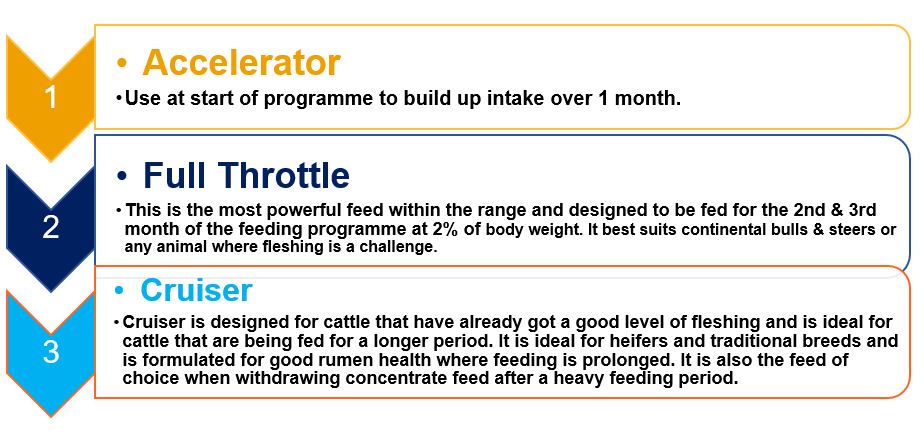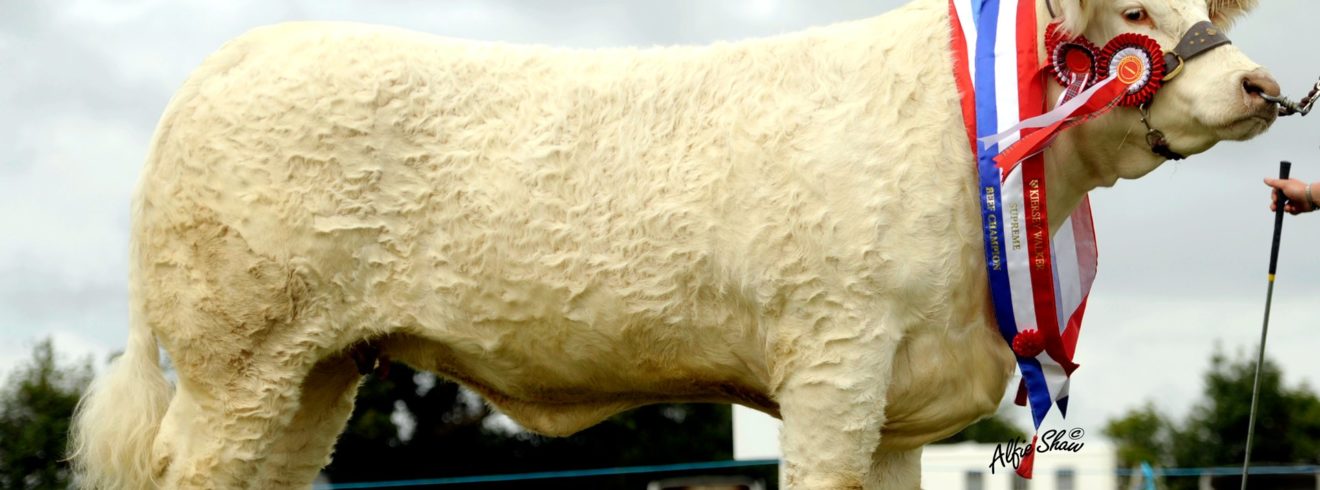The standards are exceptionally high and turning out champions is often the result of a dream, a desire, a plan and painstaking dedication. Producing and showing cattle successfully, is an art as well as a science.
Show-ring champions tend to be the result of careful planning, well-planned breeding, well-managed feeding, good health/disease prevention, intensive training, professional grooming and showmanship.
Setting and achieving performance targets
Ultimately, now the aim is to have animals achieving high levels of growth and performance in all young stock that would have been destined for the show-ring, while also having any animal that will be attending a sale/being sold at home in the correct condition at the point of sale.
When it comes to feeding young bulls for sales over the next number of weeks/months, the sentiments of ‘fit not fat’ should be adhered to when placing a bull on a feeding regime to gain condition prior to sale.
Breeding and selection
Animals should be structurally correct, with good locomotion. If they are not correct, they will deteriorate with weight gain. A strong top-line, long body, clean front, up-headed, with balance and style is desirable. Muscularity should be appropriate to the breed, gender and desired product with emphasis on the high value areas.
Animal health
A complete animal health programme is essential. It should cover lung-worms, stomach worms, liver fluke, rumen fluke, lice (biting & sucking) and mange. Vaccination against a broad range of clostridial bacteria. Show stock that are intensively fed, frequently washed and frequently transported should be vaccinated against Bovine Respiratory Disease. Note: Any pedigree males destined for AI must be free of IBR antibodies and cannot be vaccinated for IBR.
Halter breaking and training
The starting point is to tie the animal in a safe place (where there is no potential for self-injury). After being tied a number of times and is comfortable with the idea, start to comb, scratch and brush the animal. Only after that breaking period should leading commence. This should be done in small steps in an enclosed environment and only when the animal no longer displays anxiety should you go to a more open space.
Key nutrition and feeding management considerations for show cattle
- Always adjust an animal slowly onto or off a concentrate feed or a change in feed.
- Feed animals at least 2 times per day (once above 5kg) and 10-12 hours apart.
- Never feed more than 2% of bodyweight as concentrate and good forage is critical to support rumen function. Ideally good hay or haylage is preferable to pit silage. Even at grass it is necessary to offer high quality long fibre when feeding high levels of concentrate.
- Stage of growth will be the driver of nutrient requirements.
- Feed additives should be chosen on their ability to improve feed efficiency/overall performance and/or improve the security of rumen function.
- With the growth potential of high genetic merit stock, mineral specification and its absorption characteristics is critical in young stock.
- Access to clean water is a must at all times.
- Consistency is most critical.

Summer maintenance feed for pedigree youngstock
GAIN Startacalf & GAIN Weanling Crunch are ideal for younger pedigree stock where growth and maintenance is the goal over the summer months.

